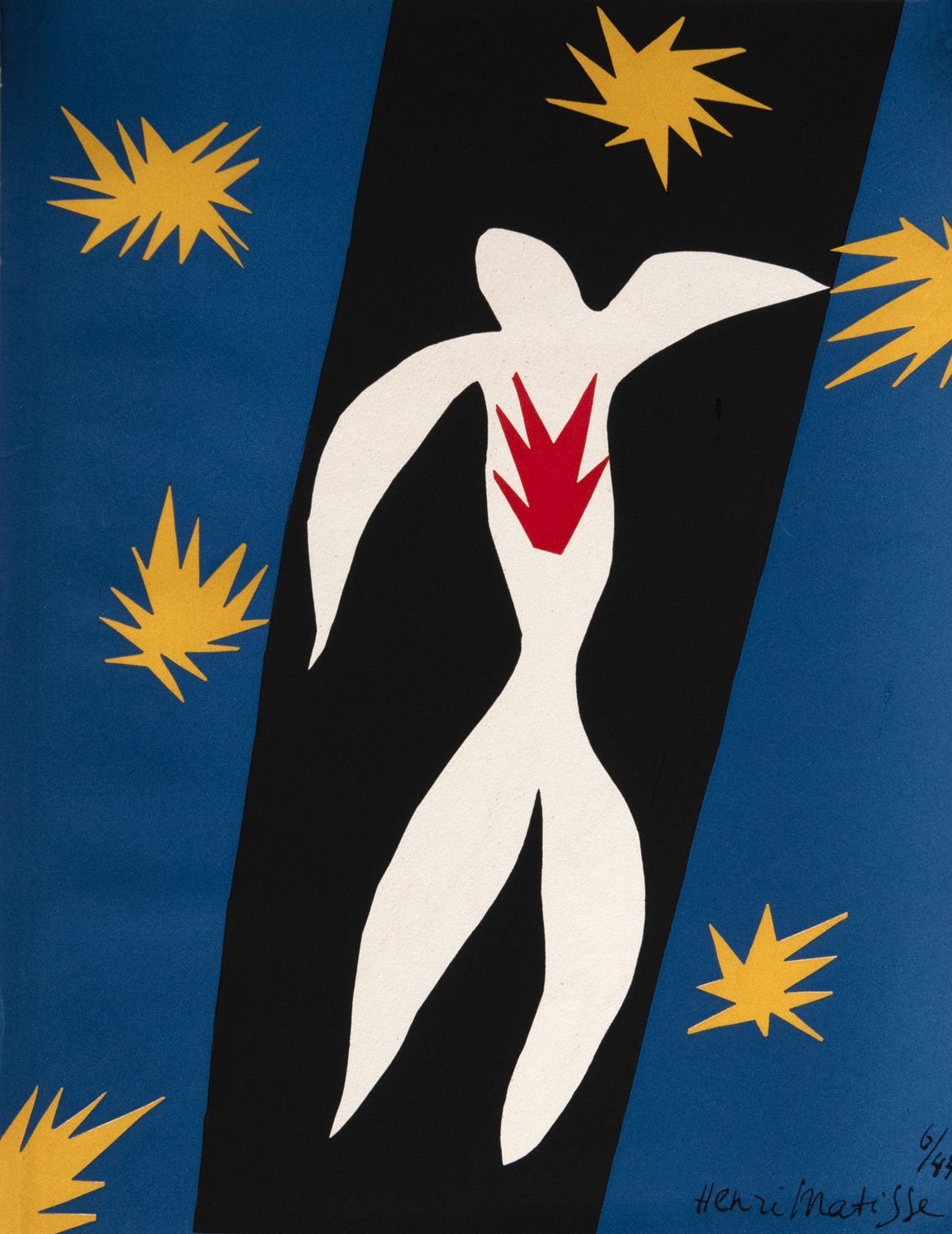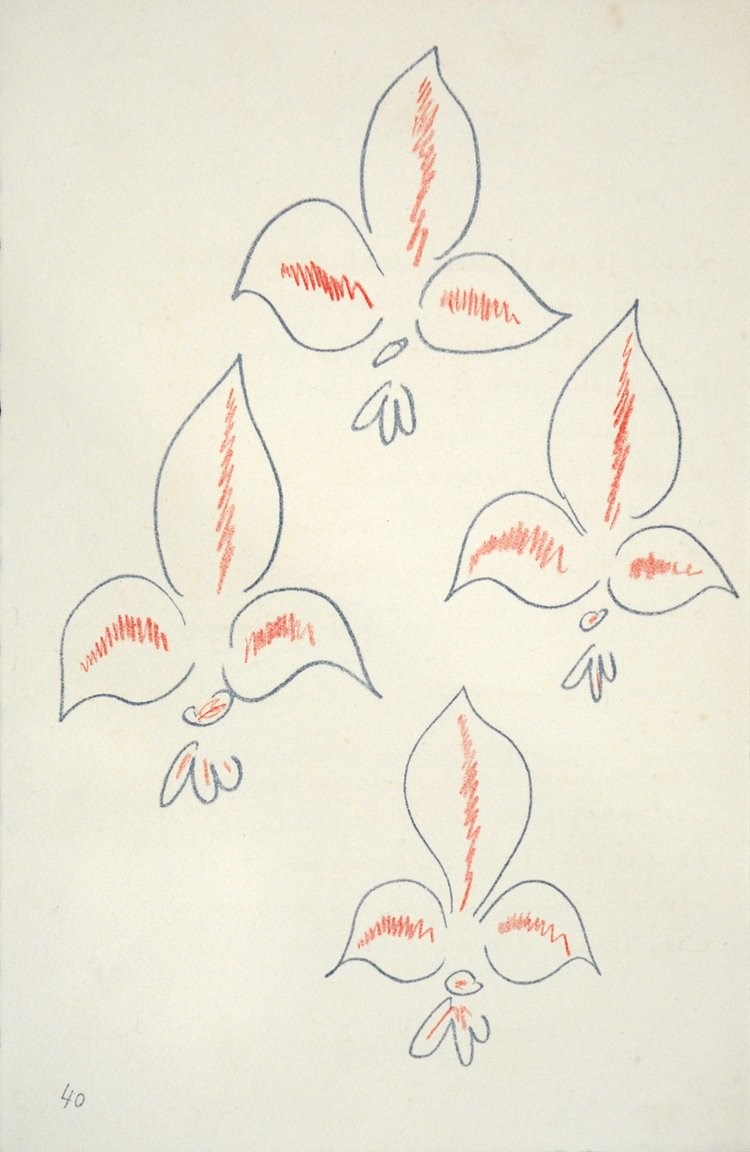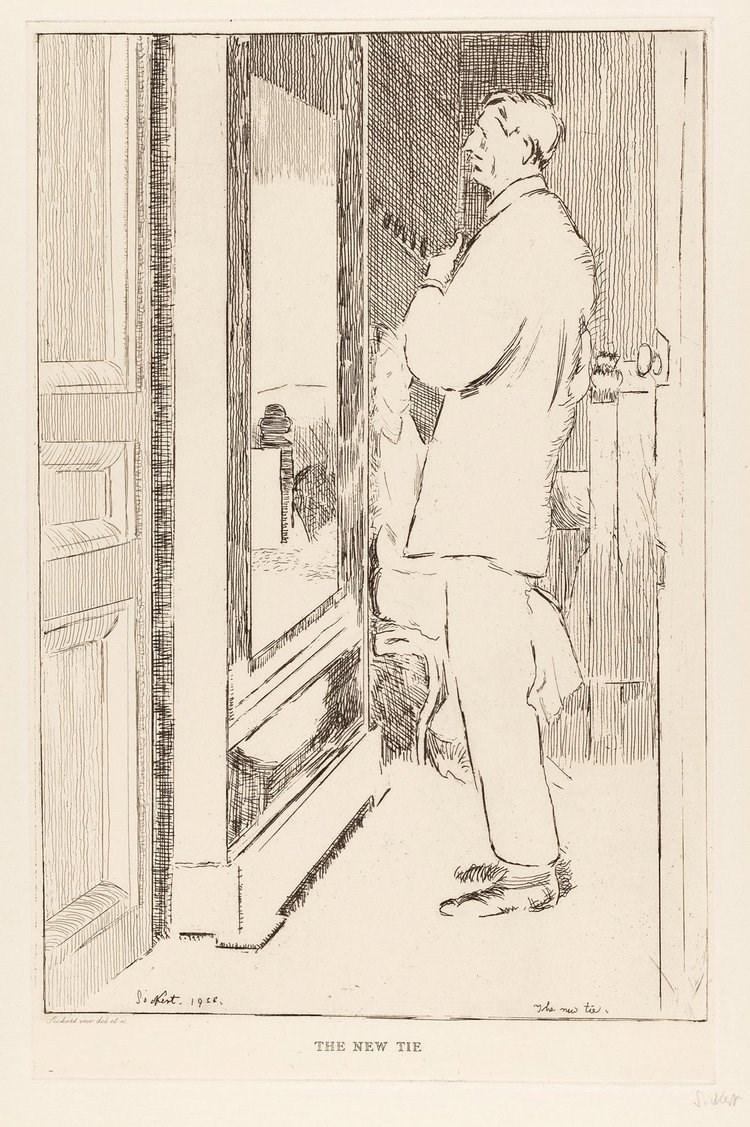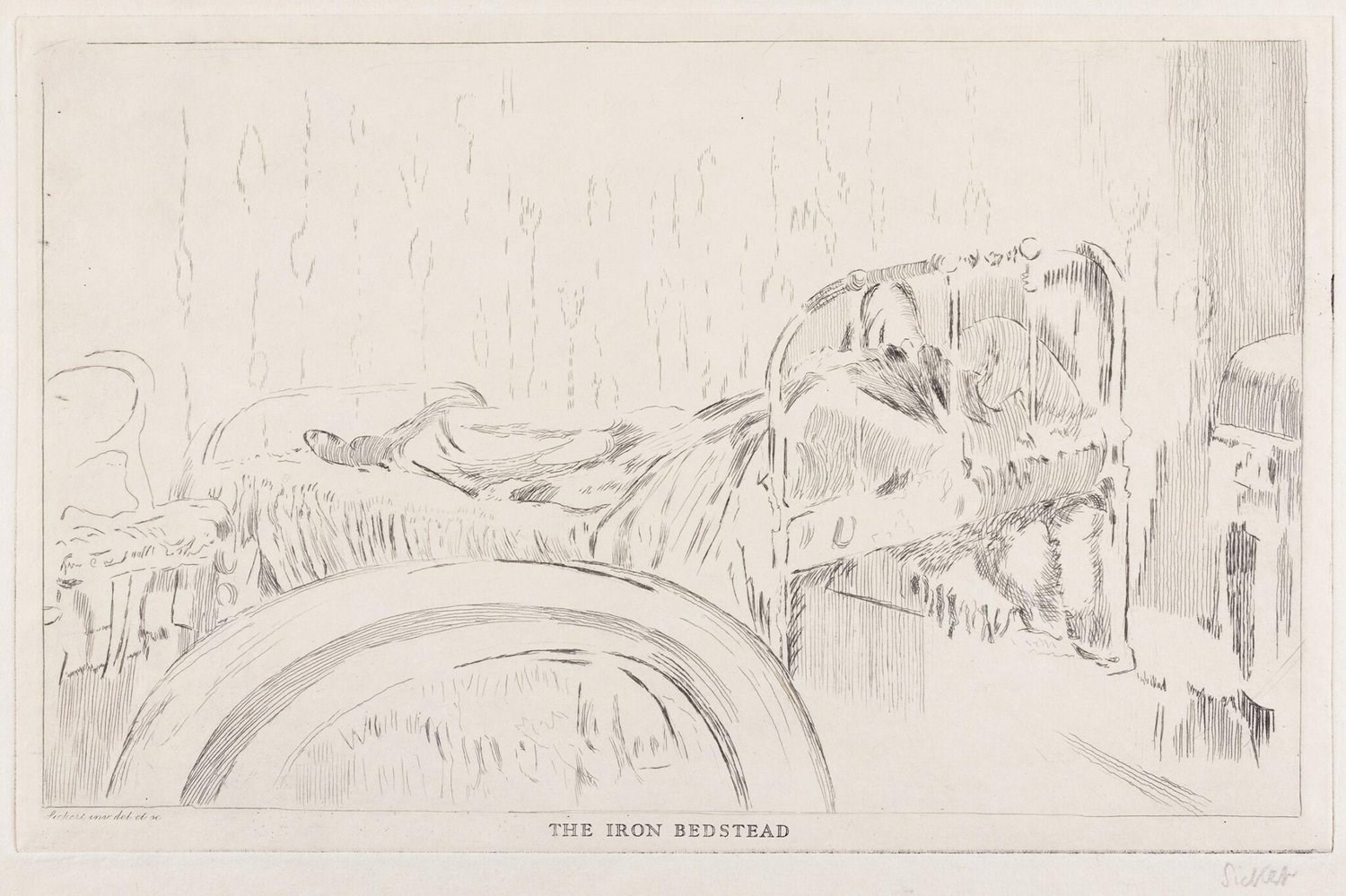Big Name Bargains
14 July 2022
ShareSome works by renowned artists can be acquired for surprisingly low prices.
Francesca Peacock
Francesca Peacock is an art, books, and culture writer.

The Fall of Icarus by Henri Matisse. Lithograph, 1943, Signed in plate. 26.5 x 35.5 cm
Available from Goldmark Gallery for £2,250
What would you think if I told you I have a Matisse on my kitchen wall? Would you think I’d stolen it from some unsuspecting art museum in a yet unreported (but very glamorous) heist? Or that I have greater reserves of art-collecting cash than my somewhat precarious employment as a writer might suggest?
But what if I told you the answer was neither international art-thievery, nor some shady oligarch lover who buys me paintings whenever I so demand. The Matisse in question — which sits above the endless piles of books, half-read magazines, and the general detritus of a kitchen which is rather messier than the delightful interior Matisse himself painted — was acquired in a disappointingly above-board fashion from Goldmark Gallery.
As a lithograph page from Matisse’s 1950 hand-autographed and illustrated book, Poemes de Charles d’Orléans — a fifteenth century French poet, who was captured during the Hundred Years War, and wrote in both Middle French and Middle English — it is hardly one of the artist’s most famous works. But, with its colourful drawings of fleurs-de-lis, and its stanzas of poetry about being utterly indifferent to Valentine’s Day, it is one of my most prized possessions. And, at just under £400, I like to think it was something of a steal. It is, after all, a mere fraction of the auction record for Matisse. His 1923 painting, Odalisque couchée aux magnolias, fetched $80.8 million in 2018. Nor was my bargain a one-off: Goldmark Gallery currently has authentic works by the artist ranging from £250 to £7,450.
As Mike Goldmark of Goldmark Gallery notes, this proliferation of cheap works is not an accident of history. Matisse, and many other artists, had distinct “social consciousnesses” and “loved the idea that ordinary folk could afford their work”. And, accordingly, they made work expressly for this purpose: unsigned prints, or prints signed in the etching plate or supplied with a justification page — all would, and still do, sell for much less than signed works or paintings.

Poèmes - Charles D'Orléans by Henri Matisse. Lithograph, 1950. 26.5 x 41 cm
Available from Goldmark Gallery for £250
And indeed it is just not Matisse that the thrifty art collector can find on the cheap. The auction record for Picasso is a cool $179 million (for his 1955 work Les femmes d'Alger, Version 'O'). But, at Sotheby’s, you can currently find works ranging from 1000 to 10,000 US dollars. In an auction just at the end of June, many drawings, lithographs, and ceramics sold for under $10,000.
Whilst Picasso may now be predominantly revered for his paintings and works on paper, his ceramics — anthropomorphic jugs and vases, and gorgeously colourful plates and platters — are rather better value for any aspiring collector. Still not cheap (a plate sold for over $200,000 at Christie’s in May), they represent a chance for an individual collector to own a work by the artist — even if I can see the potential for tears if some clumsy oaf drops your much-loved artwork when using it as a vessel for their bacon sandwich.
But it is not just the big European names that are able to be bought on a budget. Renowned painter (and sometime-suspected Jack the Ripper) Walter Sickert is currently the subject of a major exhibition at The Tate. Rooms and rooms of famous paintings, on loan from prestigious galleries throughout the world — it is easy to think his works would be off-limits to anyone who did not have a few hundred thousand pounds to throw around.
But, just a few miles north of Tate Britain lies the art collector’s paradise of Abbott and Holder, a gallery on Museum Street. Twice a month, they send out “Lists” of their new stock to avid (and sometimes rabid) subscribers. The foaming-at-the-mouth enthusiasm makes sense when you see the quality of the works: more than once, works by Sickert have appeared on the list for under a thousand pounds. At the moment, four etchings of his are for sale, ranging from £1500 to £1800 — including a particularly brilliant etching of a recumbent figure on an iron bedstead. And, back in March, a rare Gwen John watercolour made an appearance, although at the slightly less wallet-friendly price of £12,000.

‘The New Tie’ by Walter Sickert (1840-1942). Etching. Second (final) state. Signed. 1922. Signed, titled and dated in the plate. 10.5x6.75 inches.
Available from Abbott and Holder for £1,500.

'The Iron Bedstead' by Walter Sickert (1840-1942). Etching. 2nd (final) state. Signed. The first state of this print dates to c.1915 but this, the second state, is probably later. 7x10.5 inches.
Available from Abbott and Holder for £1,500.
There is, of course, a caveat to be made about these budget-loving works by famous artists. Whilst they will cost you a fraction of the prices paid by international galleries and billionaire collectors, they are, it must be said, not quite the same as the works you might pay to see in an exhibition. It is Sickert etchings, not oil paintings which come up for sale at such appealing prices. And it is Matisse lithographs, linocuts, and posters which are available to purchase for the same price as return flights to somewhere exotic, rather than his more famous paintings and collages.
But, there’s a delight in the off-beat, the unusual, and the otherwise unappreciated: everyone knows of Matisse’s brightly coloured collage works, but how many people have ever had the chance to ponder his love for a fifteenth century poet? And everyone has heard of Picasso’s Guernica, but how many people are able to say “pass the water” and have an original pitcher by the artist handed to them?
These cheaper works are not just great value for a keen collector: they are also an opportunity to see — and love — another side of artists we all think we know too well. And, if that’s not enough to persuade you, just imagine the delight of dropping the phrase “my Matisse…” into conversation. C’est parfait, non?

